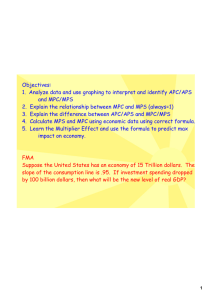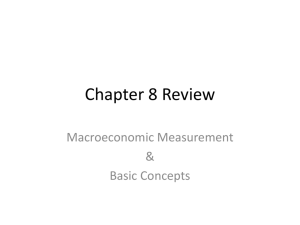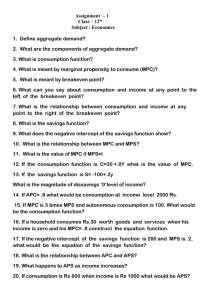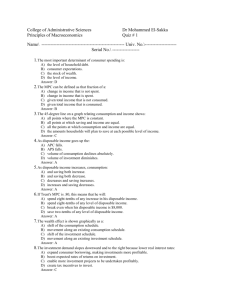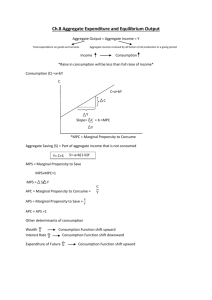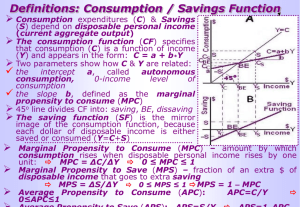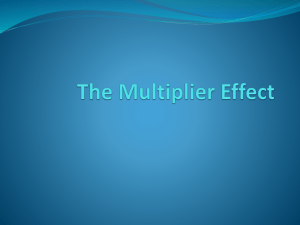SPENDING MULTIPLIER
advertisement
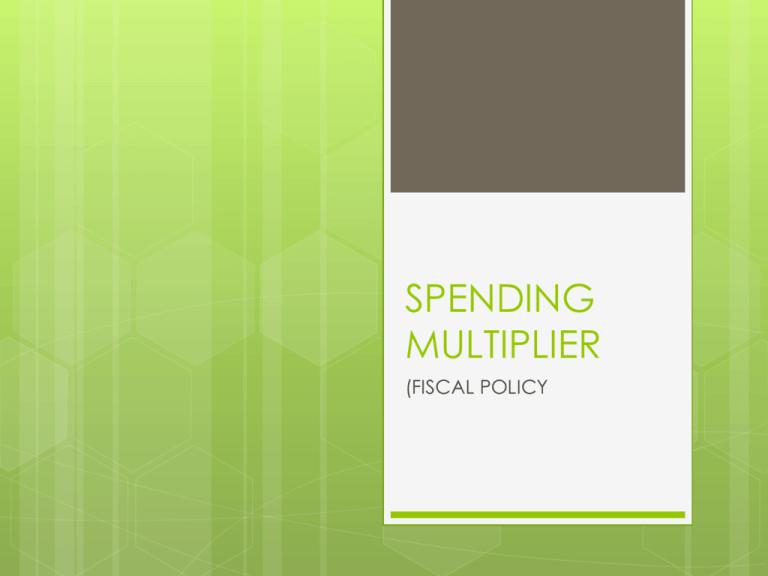
SPENDING MULTIPLIER (FISCAL POLICY MULTIPLIER EFFECT, MPC& MPS MPC : Marginal Propensity to Consume - The portion (%) of additional income that is spent. How much would you spend? MPS: Marginal Propensity to Save - The portion (%) of additional income that is saved. - Since you can only “consume” or “spend”…. MPC + MPS = 1 MULTIPLIER EFFECT $100 million dollars on a new school… - electricians (c or s?) - new work truck (c or s?) - movies (c or s?) - cell phone (c or s?) Money that gets dumped into store or businesses gets multiplied, therefore… MULTIPLIER = 1/MPS MULTIPLIER EFFECT $100 Billion dollars MPC = 80% = .8 MPS = 20% = .2 Multiplier = 1/MPS 1/.2 = 1/(2/10) = 1/(1/5) = 5 Therefore, the new amount is $500 Billion When money is spent in the economy, that money is multiplied. Multiplier = 1/MPS MPC MULTIPLIER MPC = .9 MPC = .8 MPC = .5 MPC = 0 - Multiply the numerator and the reciprocal of the denominator. - The more we spend (consume) the more multiplied - If people are spending more, then government doesn’t have to spend as much. - An increase in gov’t spending DOES NOT increase the money supply!!! Spending Multiplier Practice Look at “Unit 3” handout Decreasing Taxes – changes in gov’t spending have a greater effect on AD than changes in taxes because part of a tax is saved. People only spend half a tax cut, so only half gets multiplied. Practice… GOVERNMENT SPENDING Assume the MPC is .5. How much should the gov’t increase spending to close the gap? Assume the MPC is .8. How much should the gov’t increase spending to close the gap? TAXES If the MPC is .5 how should gov’t change taxes to close the recessionary gap? If the MPC is .8 how should gov’t change taxes to close the recessionary gap? ($40B to close the gap) FISCAL POLICY - PROBLEMS 1. 2. 3. Deficit Spending – if the gov’t increases spending without increasing taxes, they will increase the annual deficit and the national debt. Time Lags – Congress takes time to write, debate, pass, and implement legislation Crowding Out – Gov’t spending might cause unintended effects that weaken the impact of the policy. (Ex. Deficit spending increase AD therefore, interest rates increase and business investments decrease.



